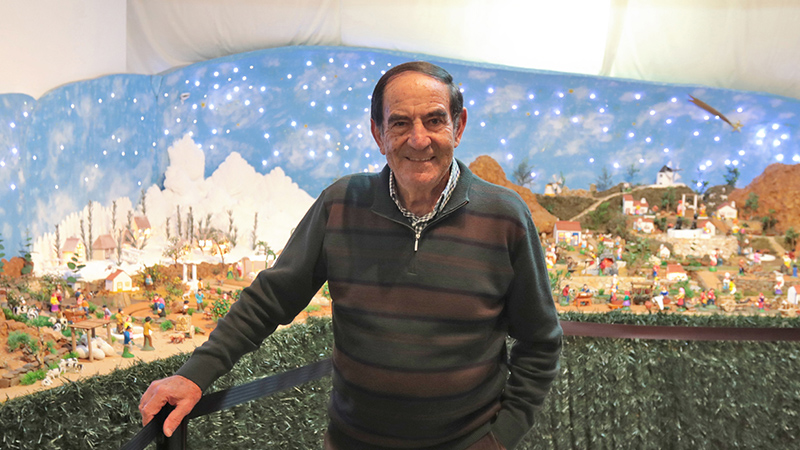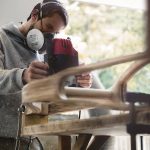José Cortes is a man of many talents. For the last few years he has delighted the public in Lagos with his spectacular Christmas crib – an enormous panorama featuring minute details of past village life. This year he has gone one step further and created a collection of miniature antique coaches and carriages exhibited at Lagos Cultural Centre.
Each December I have paid a visit to his Christmas crib laid out in his garage in the old town of Lagos and marvelled at the scenarios he has created. There is everything you can imagine in a traditional village bustling with activities. Amongst the whitewashed houses, the village church and windmills on higher ground, there is land being tilled, animals being herded, bread being baked, wood being hewn, clothes being washed, along with a myriad of other activities – much of it laced with a good dose of humour. When you look closely you notice that many figures are actually making movements. How has he been able to create something as complex as this, I wondered?
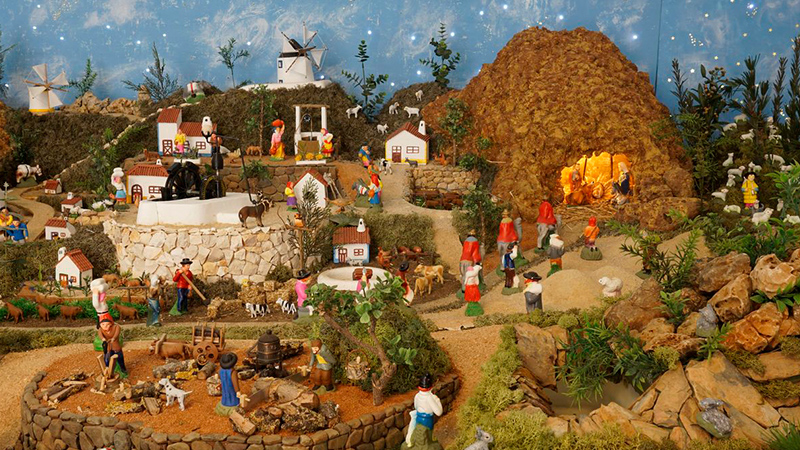
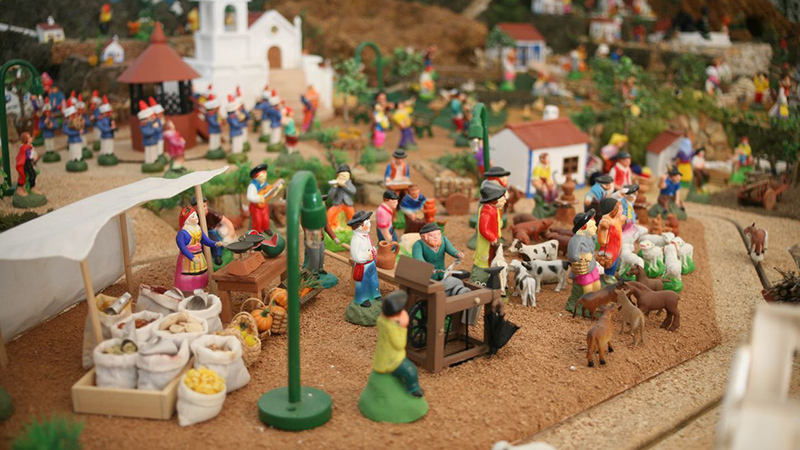
During the recent Lagos Day on November 27th an exhibition of José’s latest creations – his antique coaches and carriages – was duly opened in the presence of the Joaquina Matos, the President of Lagos Câmara and a large delegation of Moroccan visitors who seemed to be impressed by his work.
Having been witness to the creativity of José Cortes for so long there is only one course of action – to find out more. Fortunately, José is more than happy to oblige.
I am invited to his house and spend a pleasant morning talking to him and his wife, Arminda. José’s friendly demeanour, smiling eyes and eagerness to share his experiences, make an immediate impression on me. He tells me that much of the inspiration for his work is based on his childhood. He was born in 1936 in Parchal in the district of Lagoa, about one kilometre from Portimão. It was a small settlement surrounded by farmland but also by a number of fish canning factories, which abounded at this time. His father was working as a guard for a factory manufacturing sardine tins. “Even as a young child I was always making things by hand,” he explains, “I used aluminium cans, wood and wire to make toys, miniature trains and carriages for my friends.” No doubt ensuring a certain amount of popularity amongst his peers!
As times were economically difficult, he left school at 14 and moved to Portimão to work in the clothes retail business; an area of work he was to be involved in for the rest of his professional life. In 1966 he moved to Lagos with his wife, feeling very much at home, the city being “a welcoming place with an intimate feel.” He has now spent 52 years in Lagos and has made his mark.
Although busy managing his own clothes shop in the centre of town, he still had plenty of outlet for his creative energy. Later he shows me his workshop and I note several plaques on the wall, which are municipal prizes for the best shop window displays in town. In his spare time he continued to make figures and a variety of toys for his children. “The first Christmas crib he made for us was when we got married and the second one when our first child was born,” Arminda says. I spot a large railway set in his workshop that he’d also made for his children.
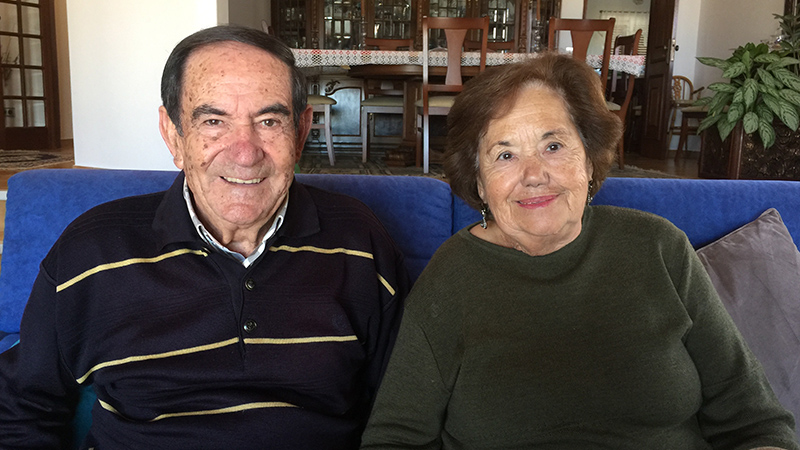
I wonder if this creative energy is a family trait? José confirms that his mother was an expert at making traditional decorative cakes and it also turns out that Arminda is a dab hand at embroidery, having been a teacher of needlework. The beautiful carpet underneath the coffee table where we sit has been meticulously stitched by her and there are cushions and wall hangings adorning the living room. I am obviously in a creative environment.
After his retirement in 2011 José began work on the large-scale crib in his garage. “It was initially for my children. I was hoping that when I opened the garage door they would be utterly charmed by it, and so they were,” he grins. As it turned out to be so large he contacted the Câmara and the President at the time thought it was valuable enough to be shared with a wider public. One week in mid December is designated for school parties and then it is opened to the general public.
“The scenes are an approximation of how things were in the past and follows the tradition of Christmas cribs,” José explains. “It captures much of what I experienced in my childhood, seeing people work in the fields near where I lived.”
Surely it must have demanded a lot of hard work and effort? José nods emphatically: “The first two years were really hard. As I’m entirely self-taught, I have to learn by trial and error. I had to do all the basics such as construct the base for the crib and work out how to do the mechanical movements of the figures.” He sources material from Lisbon and the north of the country and has a network of artisans who make the figurines he uses.
For the last seven years he has been augmenting the panorama with further activities and this year there is the addition of a vineyard. However, he feels he may have exhausted the possibilities, as he does not want to include modern day implements as it then ceases to be a crib. True enough, there is no tractor or combine harvester in sight!
Although the crib may well be complete there is still no stopping José. Just over two years ago on his way to Lisbon he had an inspiration. At a motorway petrol station he spotted a replica of a traditional horse-drawn carriage used as a ‘taxi’ in his childhood. “I took some photos and decided I just had to make my own!” he says. After doing his drawings to approximate scale and building the basic structure of balsa wood, he was able to complete his very first carriage.
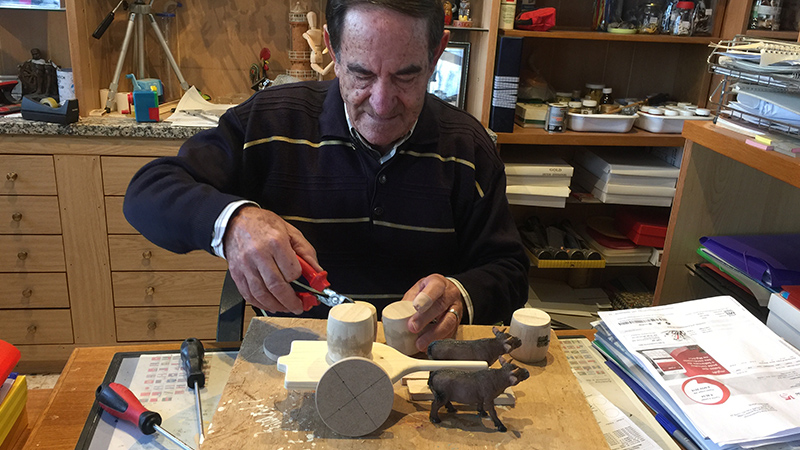
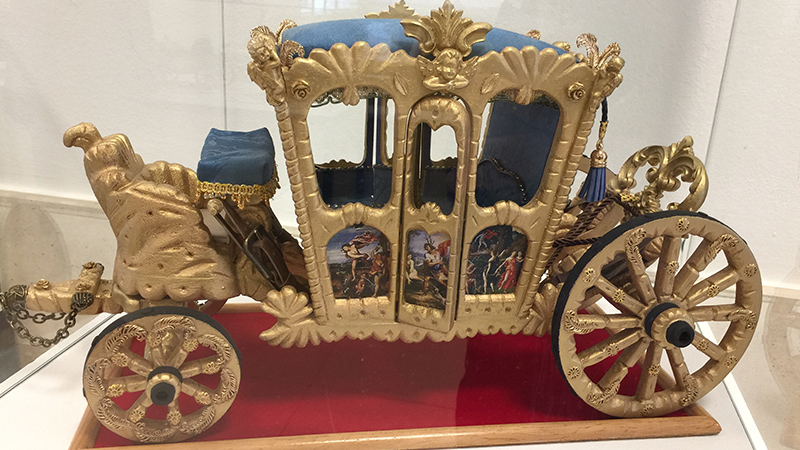
Arminda remembers well these vehicles from her youth: “As there was hardly any other transport available at this time, we often used to catch this horse-drawn ‘taxi’ from Portimão to the beach at Praia da Rocha. I recall that some even had curtains in the windows.”
Other vehicles soon followed such as carts for transporting goods and water, along with 18th and 19th century carriages for the nobility and royalty. Twenty-three of these are currently on display at Lagos Cultural Centre.
He shows me his workshop or atelier, as he prefers to call it, in the basement of his house. It is a large space, immaculately organised. Along the walls are workbenches, cupboards and chests of drawers that he has made himself; a desk where he does his drawings; bookcases full of material for research; an array of tools hanging in their appropriate spaces and innumerable plastic boxes full of nails, screws and ball bearings. “I wouldn’t be able to do my work unless I’m well organised,” he says.
Sometimes he may have difficulties with a particular carriage and feels it just doesn’t work as some details are missing. It may take two or three months to get it right. “At times I wake up in the middle of the night and realise, aha, this is how I should do it!” he laughs. “I get up to make a note and my wife often complains!”
At this point I turn to Arminda and ask if she minds all the time that her husband spends on his work? “No, not at all. I fully support what he is doing,” she says. “In fact, we spend more time together as he is always in the house working on something. He was never one for idling away his time in cafés.”
Why is he prepared to invest so much time and energy on his projects? “I do it out of sheer pleasure,” he explains. “To be able to transform something from nothing into something meaningful is just marvellous.”
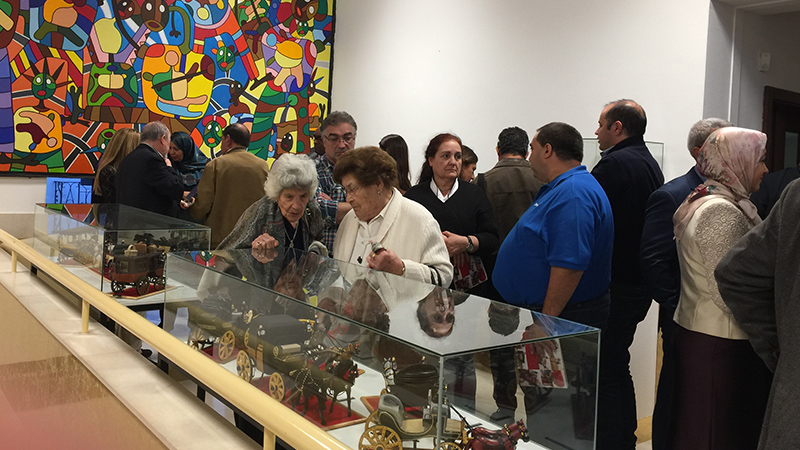
Entrance to the Christmas crib is free, as he doesn’t want any monetary gain from what he does although he encourages donations in aid of the charity NECI
(A local association working with people with physical and learning disabilities). For him this time of year is particularly significant when families and friends come together to enjoy each other’s company. “If there is a message behind my Christmas crib, it’s that of tolerance, understanding and friendship with others,” he adds.
And what of the future? At a sprightly 82 he still has his health but he concedes that “age is unforgiving.” He will continue making carriages as long as he can and will make his Christmas crib available for others to enjoy.
Thank you, José for the generosity of your spirit and for the wonderful insight into times past.
This article was originally published in the December edition of 2018.
